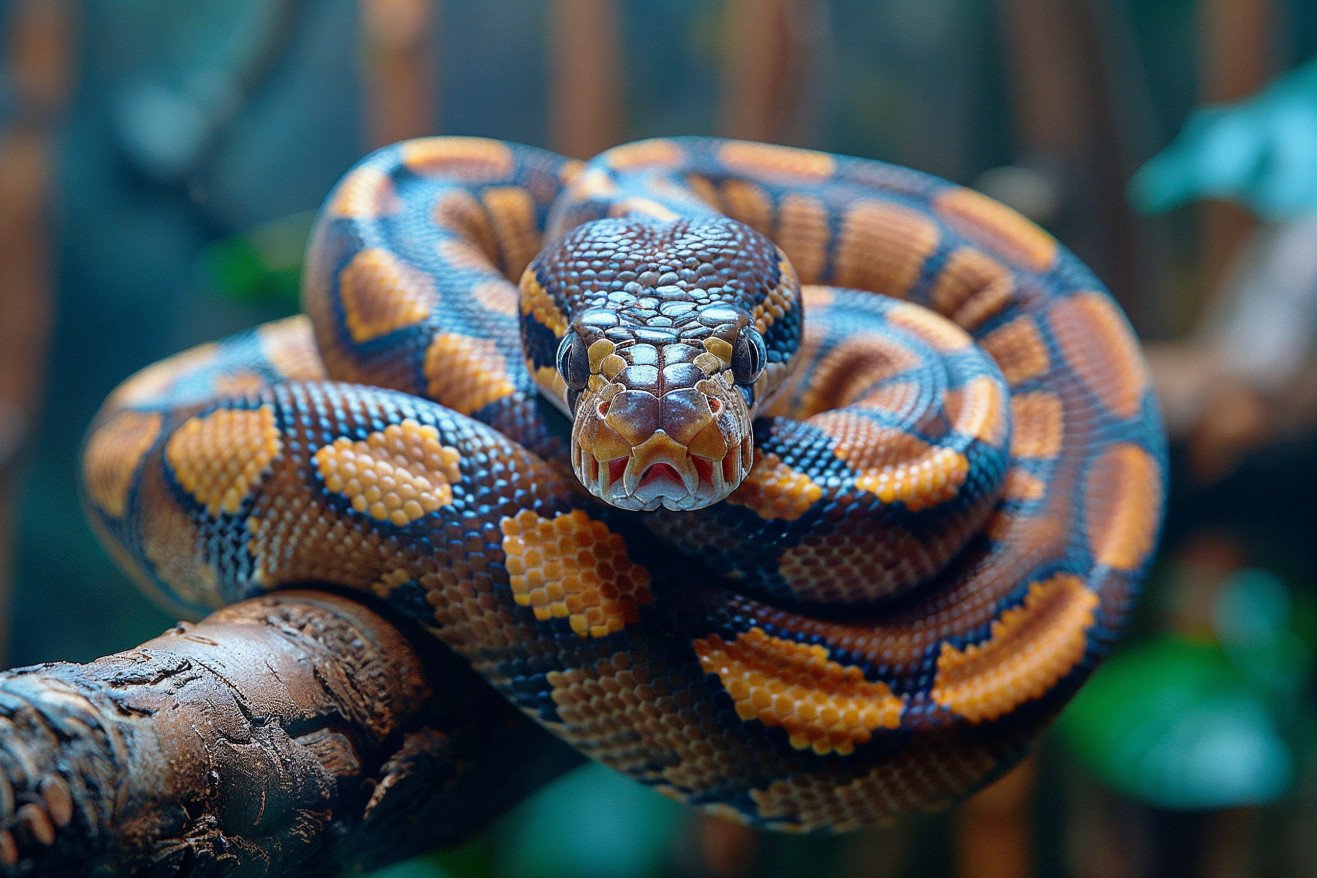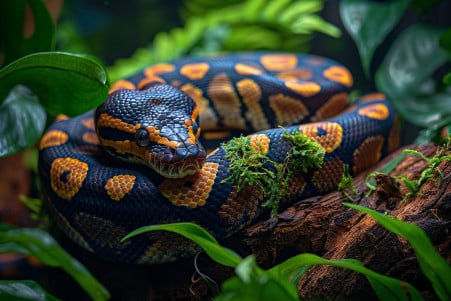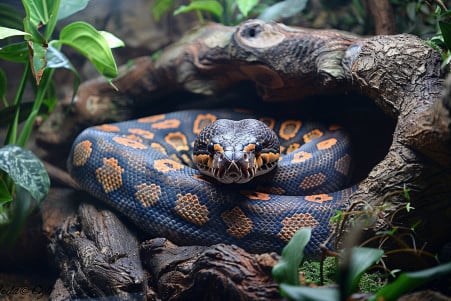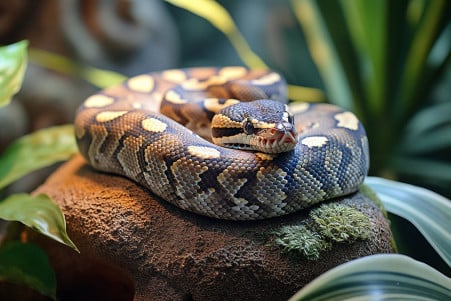Ball Python Fasting: How Long Can They Go Without Eating?
22 April 2024 • Updated 21 April 2024

If you own a ball python, you may be wondering how long ball pythons can fast and what might cause them to stop eating. Ball pythons can go without eating for several months due to their ability to enter torpor and reduce their metabolic rate, but long-term fasting can have negative health consequences. It's also possible that younger ball pythons may need to eat more often than adults.
The length of time that your ball python can safely fast depends on a number of factors, including their physiology, age, and the conditions in which they are kept. To help you better understand this topic, we will look at scientific research on ball python feeding patterns, information from veterinarians, and the experiences of reptile owners. This will help you understand how a ball python's caloric requirements, behavior, and health are impacted when they fast for an extended period of time.
How long can a ball python go without eating?
How to Tell If a Ball Python Is Hungry or Starving
If you are a ball python owner, it is important to know the signs of hunger and starvation in your pet. According to XYZReptiles, signs of hunger in ball pythons include restlessness, frequent tongue flicking, "glass surfing" behavior along the enclosure walls, head bobbing, and a specific body posture with the head raised.
That said, a lack of appetite can also be a sign of a larger issue. ReptiFiles explains that incorrect husbandry, relocation stress, illness, overfeeding, excessive handling, or offering inappropriate prey items can all lead to a ball python refusing food. In turn, prolonged fasting can result in weight loss, lethargy, poor skin quality, and a lack of energy.
If your ball python has not eaten for more than 2-3 months or has lost 5-10% of its body weight, it is best to seek veterinary care, according to Reptile Guide. Regularly monitoring your snake's behavior, physical condition, and weight is important for catching potential health issues early.
By knowing the signs of hunger and starvation and addressing the potential causes of a lack of appetite, you can make sure that your ball python is getting the nutrition and care it needs to be healthy. This naturally leads into the next section, which covers how to deal with a ball python that won't eat, and is the next step in the process of addressing feeding issues.
How to Get a Ball Python to Eat
Making sure that the ball python's tank is set up properly is one way to encourage the snake to eat. According to XYZReptiles, the right temperature, humidity, and substrate in the snake's tank are all important in getting a ball python to eat.
Making sure that the prey is the right size and that it's been killed and warmed up properly can also help make the snake more interested in eating, especially since ball pythons are known to be sensitive to the temperature of their food. In fact, as Reptilinks explains, feeding a ball python prey that's room temperature or colder is one of the most common reasons that the snake won't eat.
In addition, sticking to a regular feeding schedule and making sure that the snake's tank isn't being disturbed can help reduce the snake's stress and make it more likely that it will eat. According to PetHelpful, stress and a lack of security are two of the biggest reasons that a ball python won't eat.
Other ways to get a ball python to eat include using scents, changing the feeding area, and adding more hiding places, all of which are covered in the PetHelpful article.
If a ball python won't eat, or if it's refusing to eat and is showing other signs of illness, the snake's owner should take it to the vet, as the Reptilinks article points out.
Weight Management for Ball Pythons
Weight management is important for the overall health of ball pythons. According to ReptiFiles, some signs of obesity in ball pythons include wrinkled scales, a round body shape, fat rolls, and a soft, squishy feeling when you pick up the snake. Obesity can be caused by overfeeding, keeping the snake in a small enclosure, and not providing enough opportunities for exercise.
To help an obese ball python lose weight, Terrarium Quest suggests that owners re-evaluate their feeding schedules, make sure the snake has plenty of opportunities to exercise by keeping it in a larger enclosure, and provide enrichment that encourages the snake to move around. Meanwhile, some signs of an underweight ball python include being able to see the snake's ribs or spine, sunken eyes, lethargy, and poor skin quality.
It's important to maintain a healthy weight through regular weigh-ins, feeding the snake appropriately sized prey, and making sure any health issues are addressed, as noted by the Terrarium Quest article. By knowing what to look for in both overweight and underweight snakes, ball python owners can be proactive in making sure their pets are in the best physical shape.
How to Handle a Ball Python
It’s important to know the signs of ball python behavior so that you can tell if your snake is uncomfortable or stressed while you’re handling it. According to Terrarium Quest, keeping the handling environment as calm as possible and making sure that you wash your hands before and after handling will help keep your snake’s stress levels down.
When you pick up your ball python, make sure that you fully support its body. This means that you should place one hand under the middle of its body and the other hand under its lower body. The Ball Python Care Guide also recommends that you give your snake a few minutes to get comfortable before you move it because sudden movements can startle and stress it.
As your ball python gets more used to being handled, you can handle it more often and for longer periods of time. That said, Terrarium Quest notes that you should never handle your snake too much and that you should avoid handling it after it eats, while it’s shedding, or when it’s showing signs of stress or illness because these things can stress it out and harm it.
If you handle your ball python using these handling tips and you make sure to listen to its cues and handle it in a way that respects its comfort level, you can help it learn to trust you and keep its stress levels down, which will help you set up the right environment for your pet.
Setting Up the Perfect Ball Python Enclosure
Ball pythons need a specific type of enclosure to thrive. According to the Husbandry Handbook: Ball Python - Python regius, the enclosure should be completely enclosed and escape-proof with a front-opening design for easy access. While a hatchling can be kept in a 20L Zilla Critter Cage, an adult will need at least a 40BR Zilla Critter Cage or a similarly sized Zilla Front Opening Terrarium.
It's also important to make sure that the temperature gradient is correct. According to Reptile Supply, the warm hide should be 88-90°F, the cool hide 72-80°F, and the ambient temperature at night should be 70-78°F. Humidity should be kept between 45-75%, with the cool hide at 80-100% humidity, according to ReptiFiles. You can help maintain the right humidity by adding at least 4 inches of a naturalistic substrate, such as Zilla Lizard Litter or Zilla Bark Blend.
In addition to these basics, you can also add hides, branches, and live or artificial plants to the enclosure to make it more enriching for the snake. With these tips in mind, you can set up an enclosure that will help your ball python thrive.
Conclusion: How to Keep Your Ball Python Healthy and Happy
It's important to know a ball python's natural fasting patterns and feeding needs to be a responsible owner. Regularly monitoring your snake's weight, behavior, and overall health is key to catching potential problems and responding to them in a timely manner.
In addition, providing a proper environment, handling, and feeding schedule can help ensure your ball python's health. If your ball python shows any of the symptoms listed above or if it continues to refuse food, make sure to consult a veterinarian. However, with the right care and attention, ball pythons can be healthy and rewarding pets.


